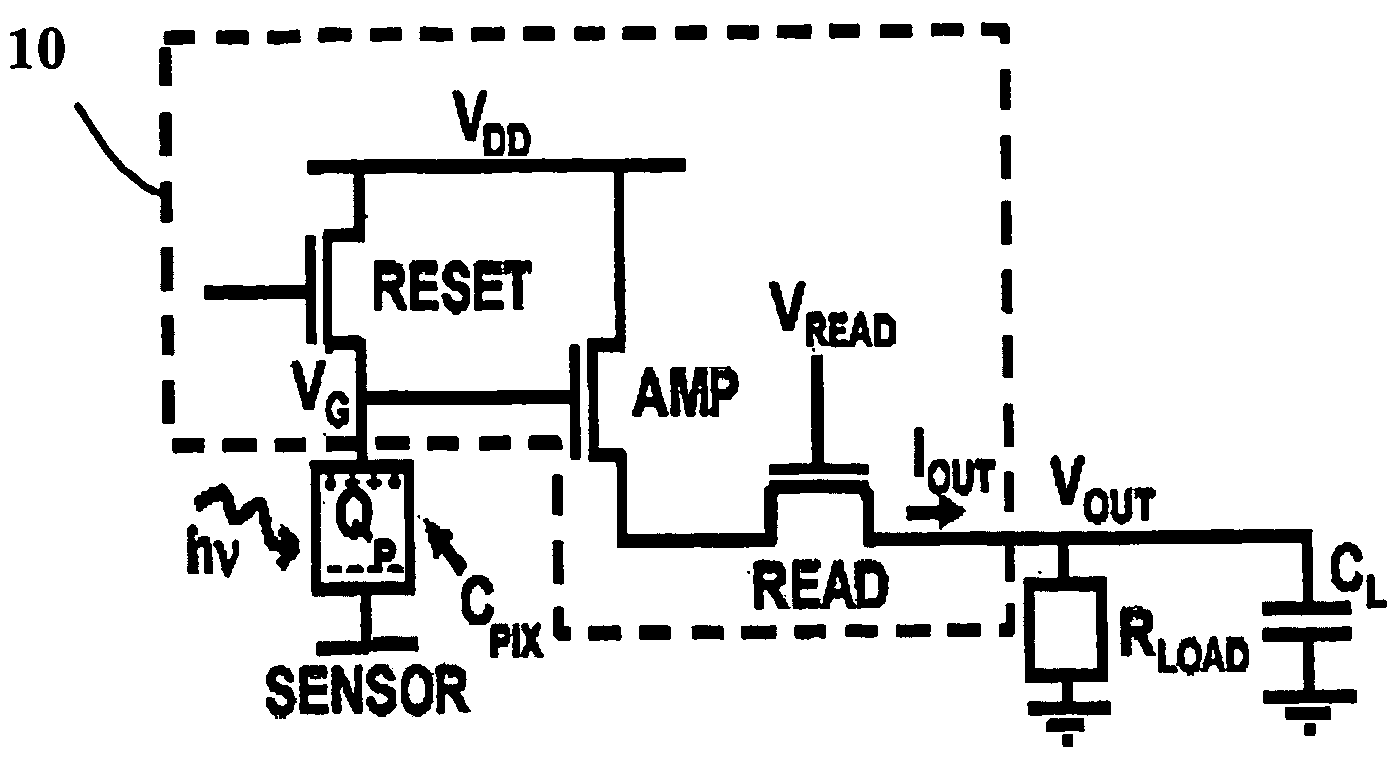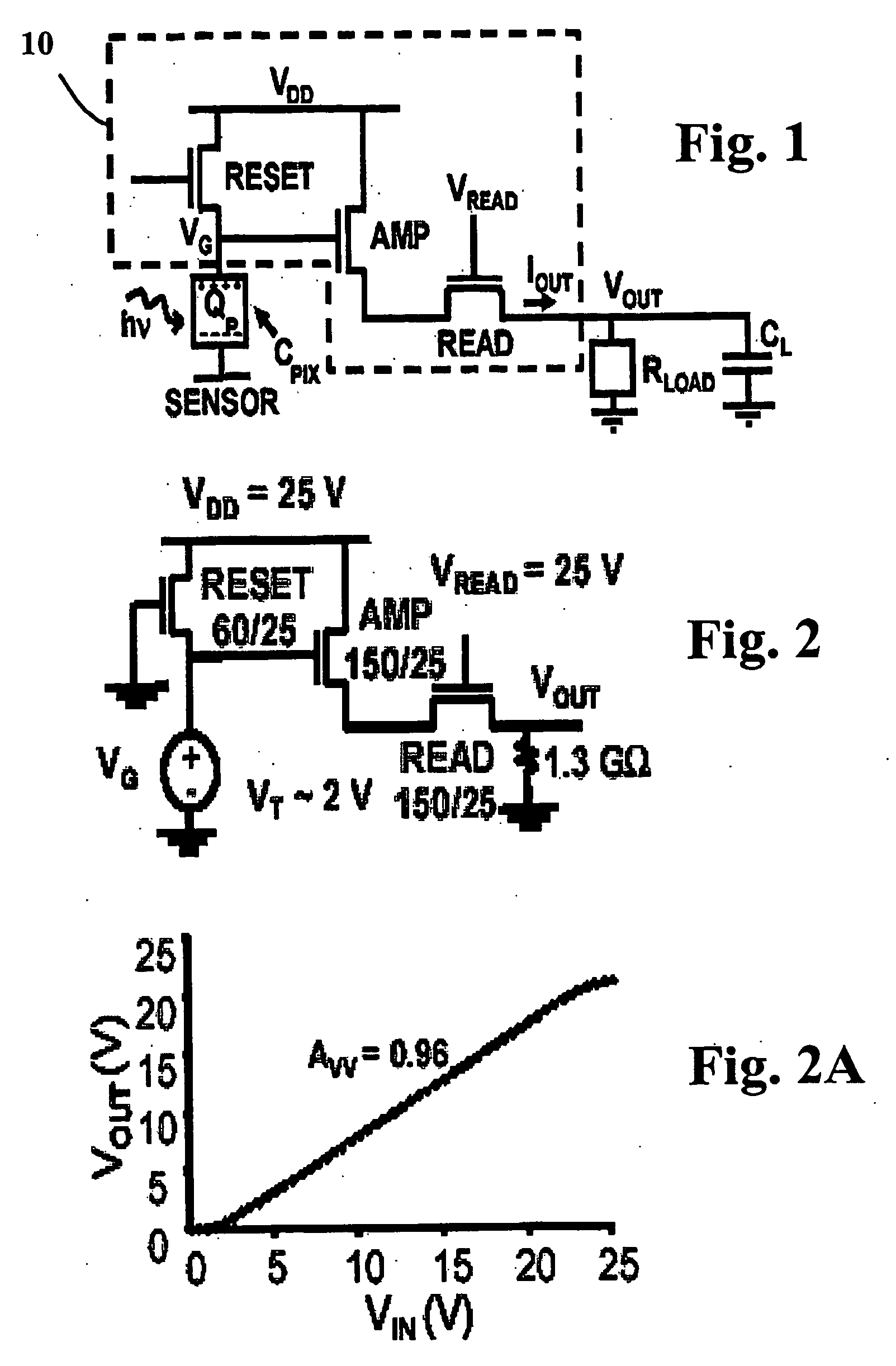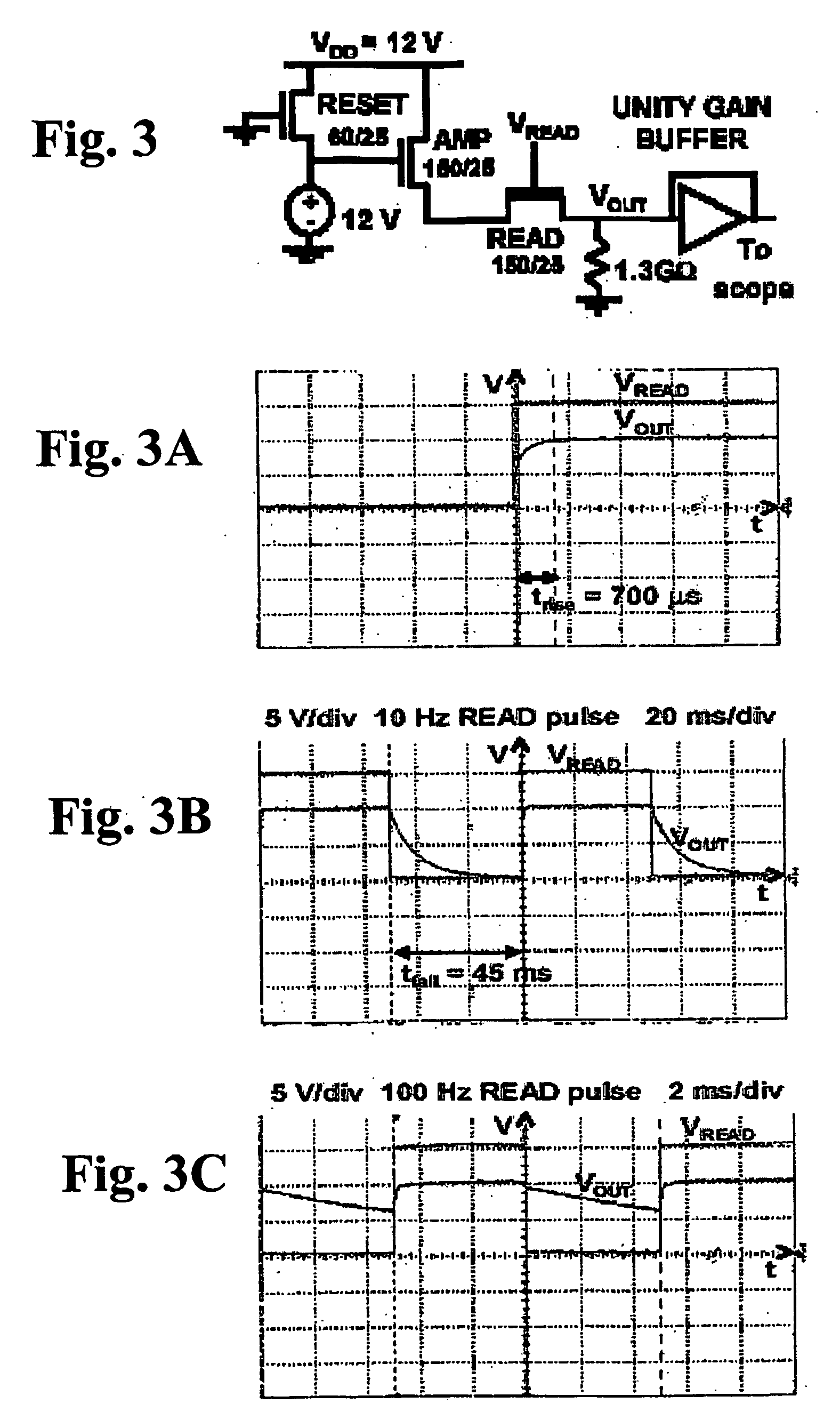Active pixel sensor for digital imaging
a technology of active pixel and digital imaging, which is applied in the field of digital imaging systems, can solve the problems of noise and area, and double sampling, and reducing the effect of vt non-uniformities and any dc components including low frequency flicker nois
- Summary
- Abstract
- Description
- Claims
- Application Information
AI Technical Summary
Problems solved by technology
Method used
Image
Examples
Embodiment Construction
[0025] Unlike a conventional PPS, which has only one TFT switch, there are three TFTs in the APS pixel. This could undermine fill factor if conventional methods of placing the sensor and TFTs are used. Therefore, in an effort to optimize fill factor, the TFTs are assumed to be embedded under the sensor to provide high fill factor imaging systems, which follows from the continuous layer sensor architecture concept suggested previously.
[0026] Central to the V-APS is a source follower circuit, which produces an output current that is converted to a voltage by a resistive load. The V-APS circuit is popular in CMOS imaging and is illustrated in FIG. 1. The V-APS operates in three modes: (1) Reset: The RESET TFT is switched ON and the pixel capacitance, C.sub.PIX charges up to Q.sub.p through this TFT's ON resistance, R.sub.ON.sub..sub.--.sub.RESET. (2) Integration: After reset, the RESET TFT is switched OFF for an integration period, T.sub.INT. During T.sub.INT, the x-ray input signal, h...
PUM
 Login to View More
Login to View More Abstract
Description
Claims
Application Information
 Login to View More
Login to View More - R&D
- Intellectual Property
- Life Sciences
- Materials
- Tech Scout
- Unparalleled Data Quality
- Higher Quality Content
- 60% Fewer Hallucinations
Browse by: Latest US Patents, China's latest patents, Technical Efficacy Thesaurus, Application Domain, Technology Topic, Popular Technical Reports.
© 2025 PatSnap. All rights reserved.Legal|Privacy policy|Modern Slavery Act Transparency Statement|Sitemap|About US| Contact US: help@patsnap.com



